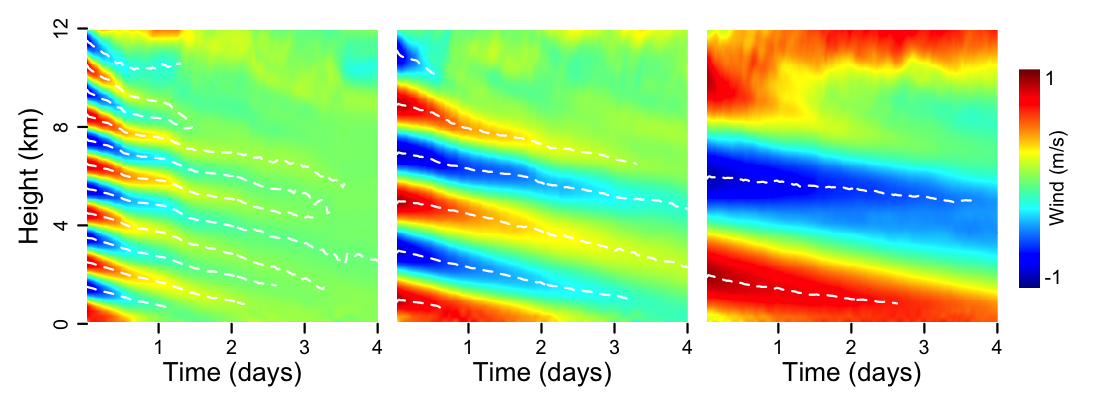Is Cumulus Drag a Rayleigh Drag?
Submitter
Romps, David — Lawrence Berkeley National Laboratory
Area of research
Cloud Processes
Journal Reference
Science
In toy models of the atmosphere, "Rayleigh damping" is used as a sink of kinetic energy in the free troposphere. Rayleigh damping accomplishes this by imposing a frictional drag on the wind to damp it to zero on a fixed timescale, which is usually chosen in the range of 1 to 10 days. The use of Rayleigh damping is justified by claiming that moist convection is the physical process responsible for this drag. Indeed, it is known that convection can damp winds —the process is referred to as "cumulus drag"—but the appropriateness of modeling it as a Rayleigh drag has not been investigated.
Impact
In this paper, analytical expressions are developed for the effect of unorganized convection on wind profiles of different vertical wavelengths. It is found that, unlike Rayleigh damping, convection damps different wavelengths with different time scales. Furthermore, convection causes different wavelengths to descend with different speeds. In particular, the theory predicts that long wavelengths damp and descend slower than short wavelengths. Although this wavelength dependence of the damping differs from Rayleigh damping, the damping time scales are found to be in the range of 1 to 10 days for wavelengths in the range of 2 to 10 km. This is the same range of damping time scales commonly used in toy models of the atmosphere.
Summary
These predictions are confirmed by large eddy simulations, which show that wind profiles with short vertical wavelengths do descend faster and damp faster than wind profiles with long vertical wavelengths. Furthermore, the large eddy simulations produce damping time scales in the range of 1-10 days.


